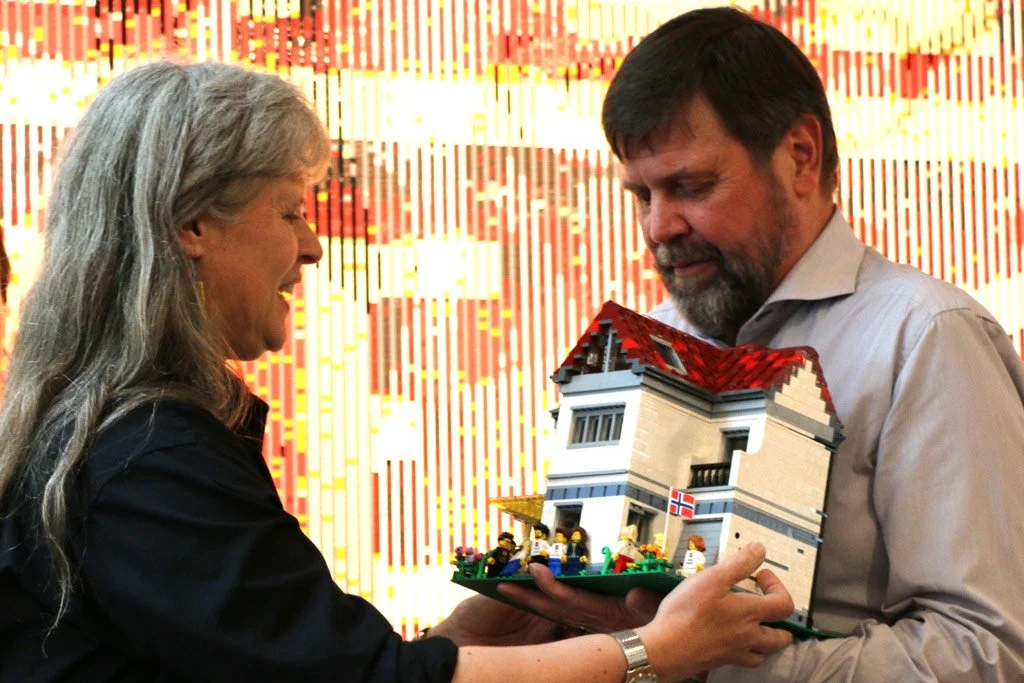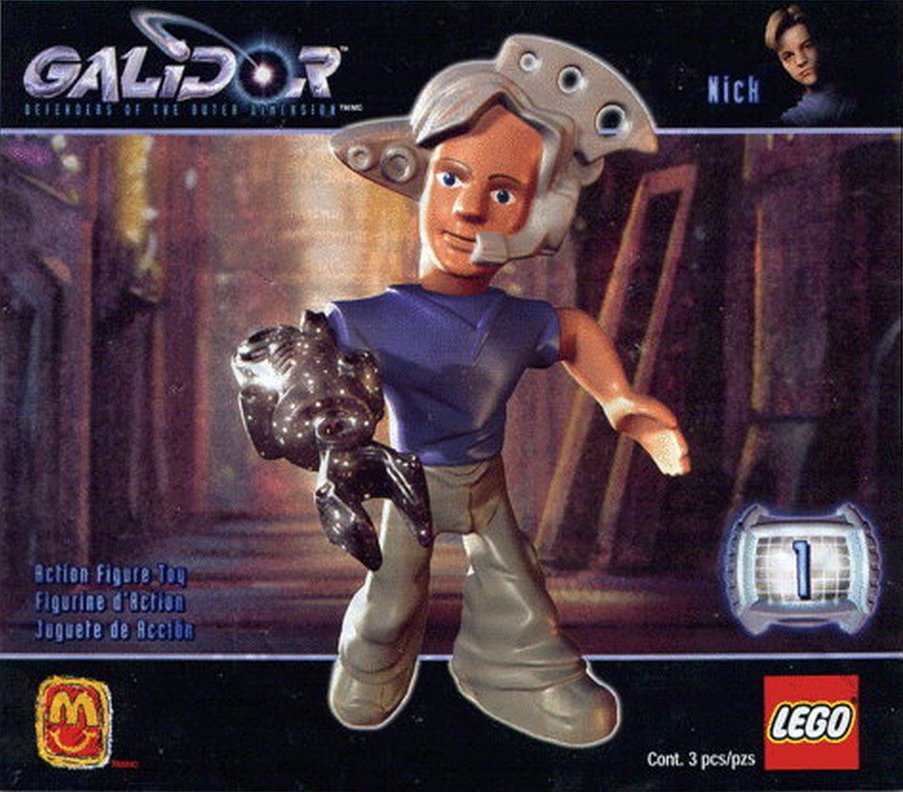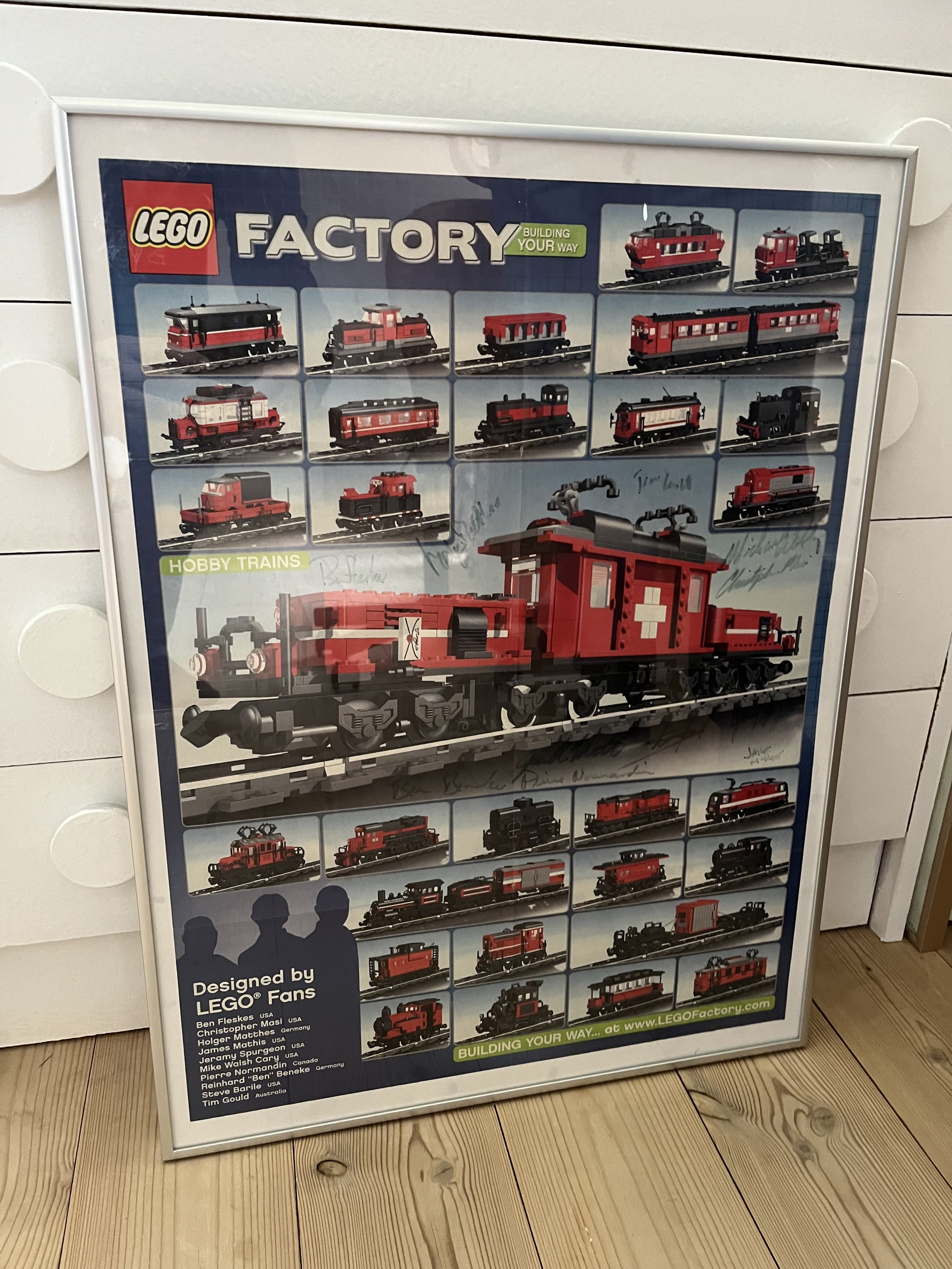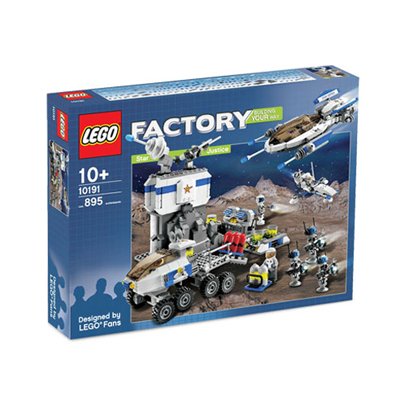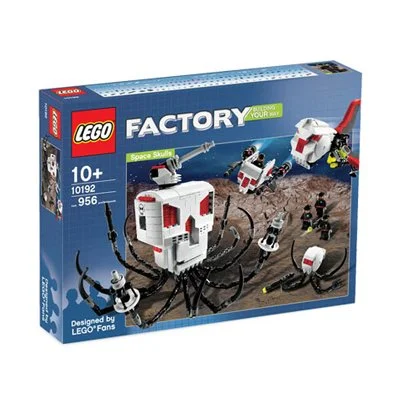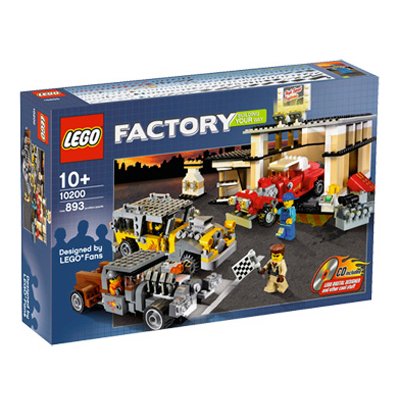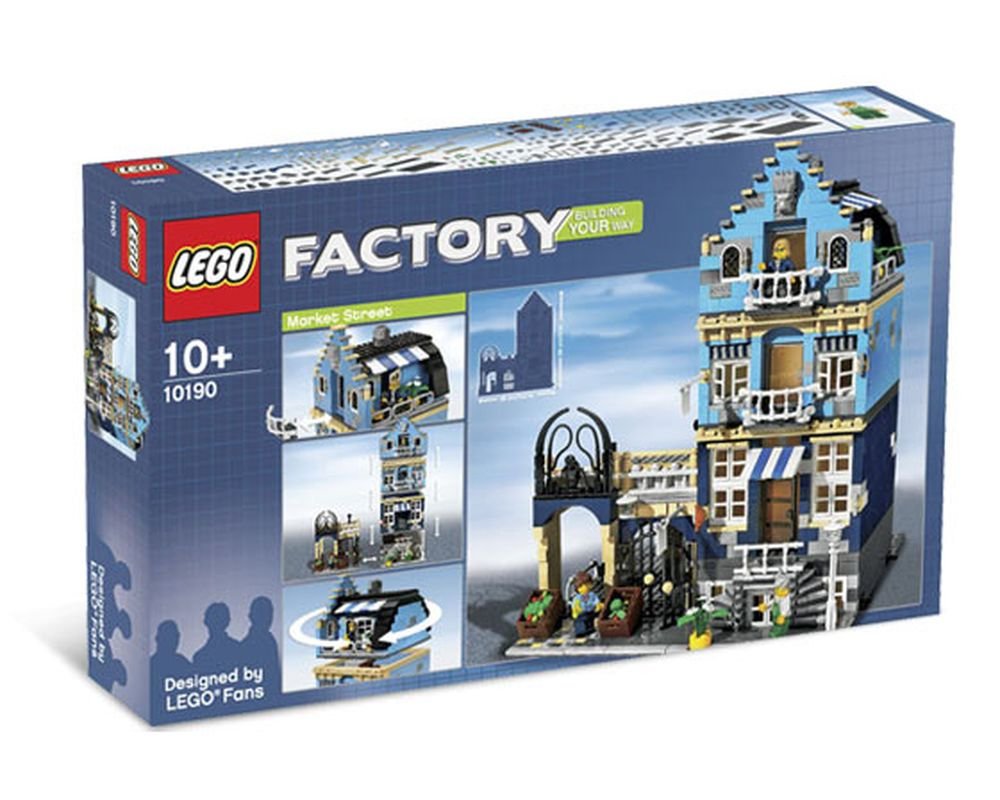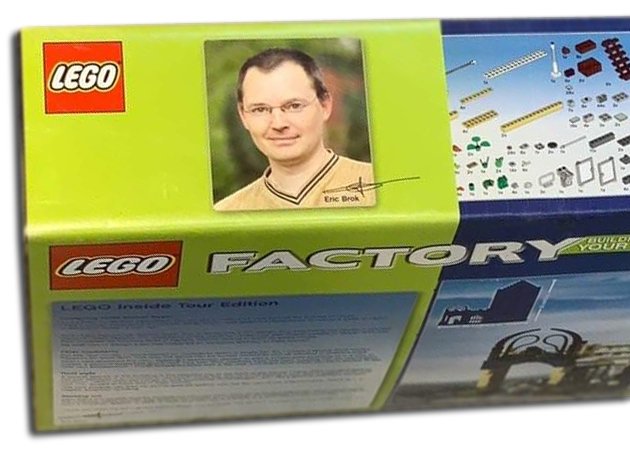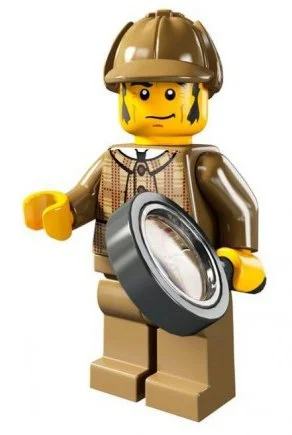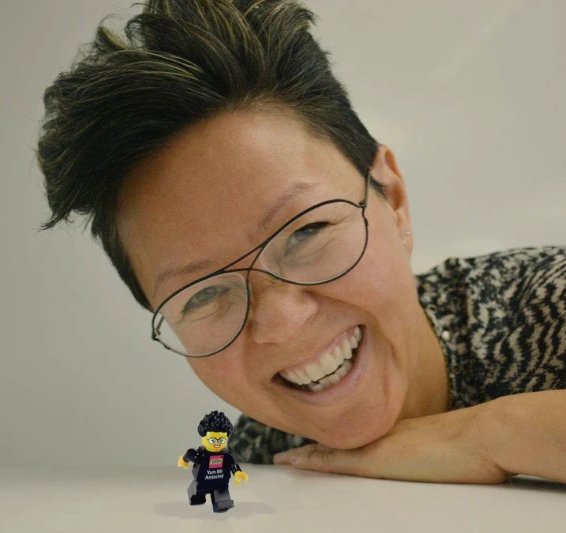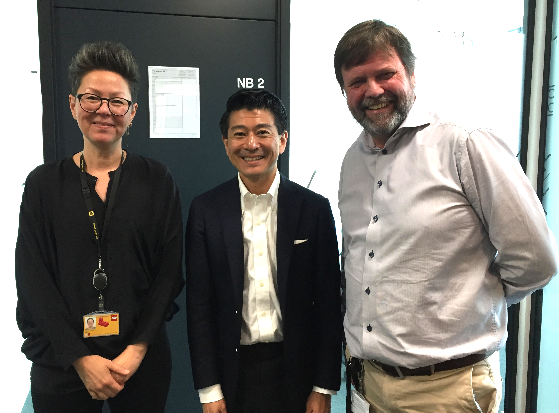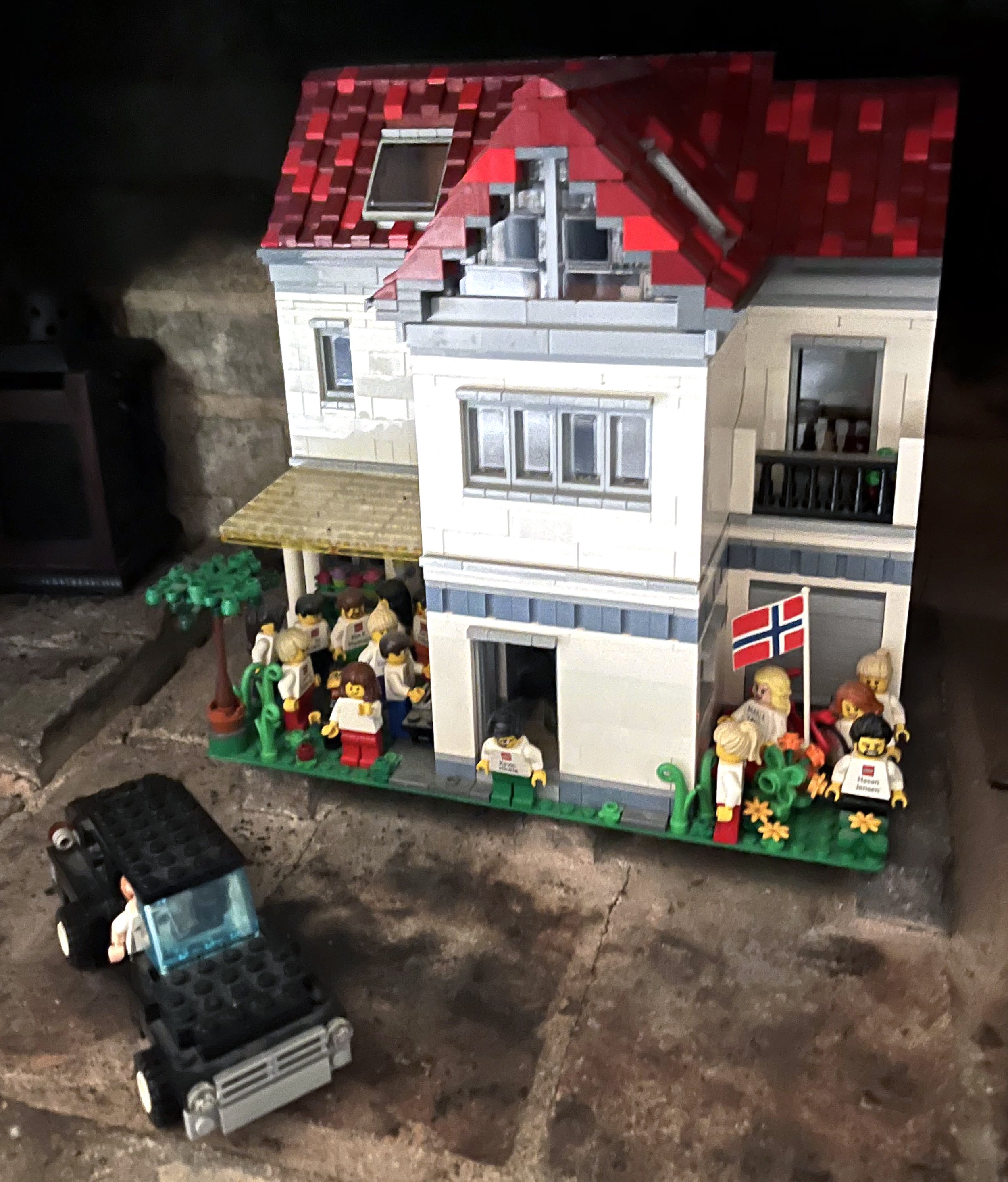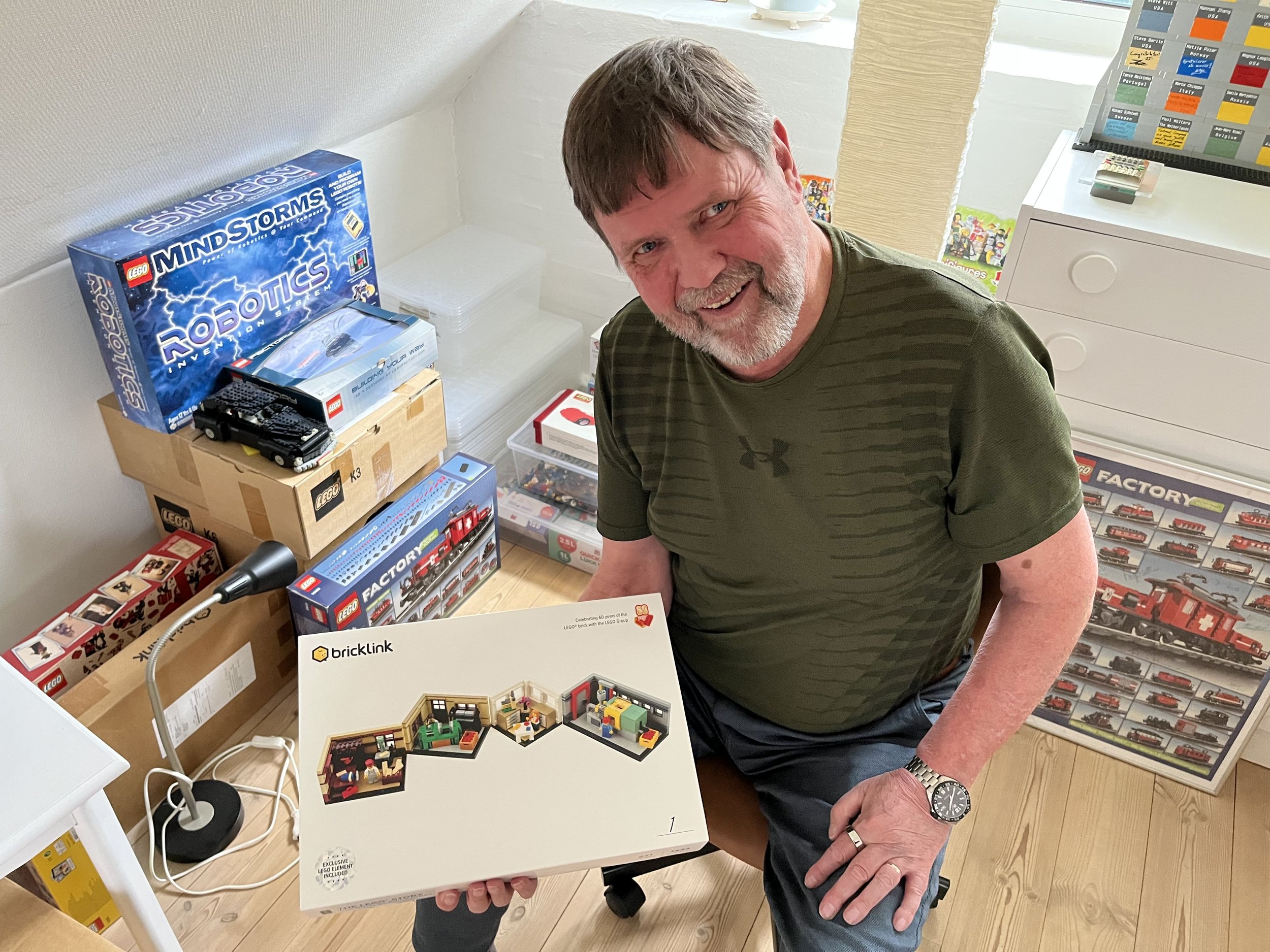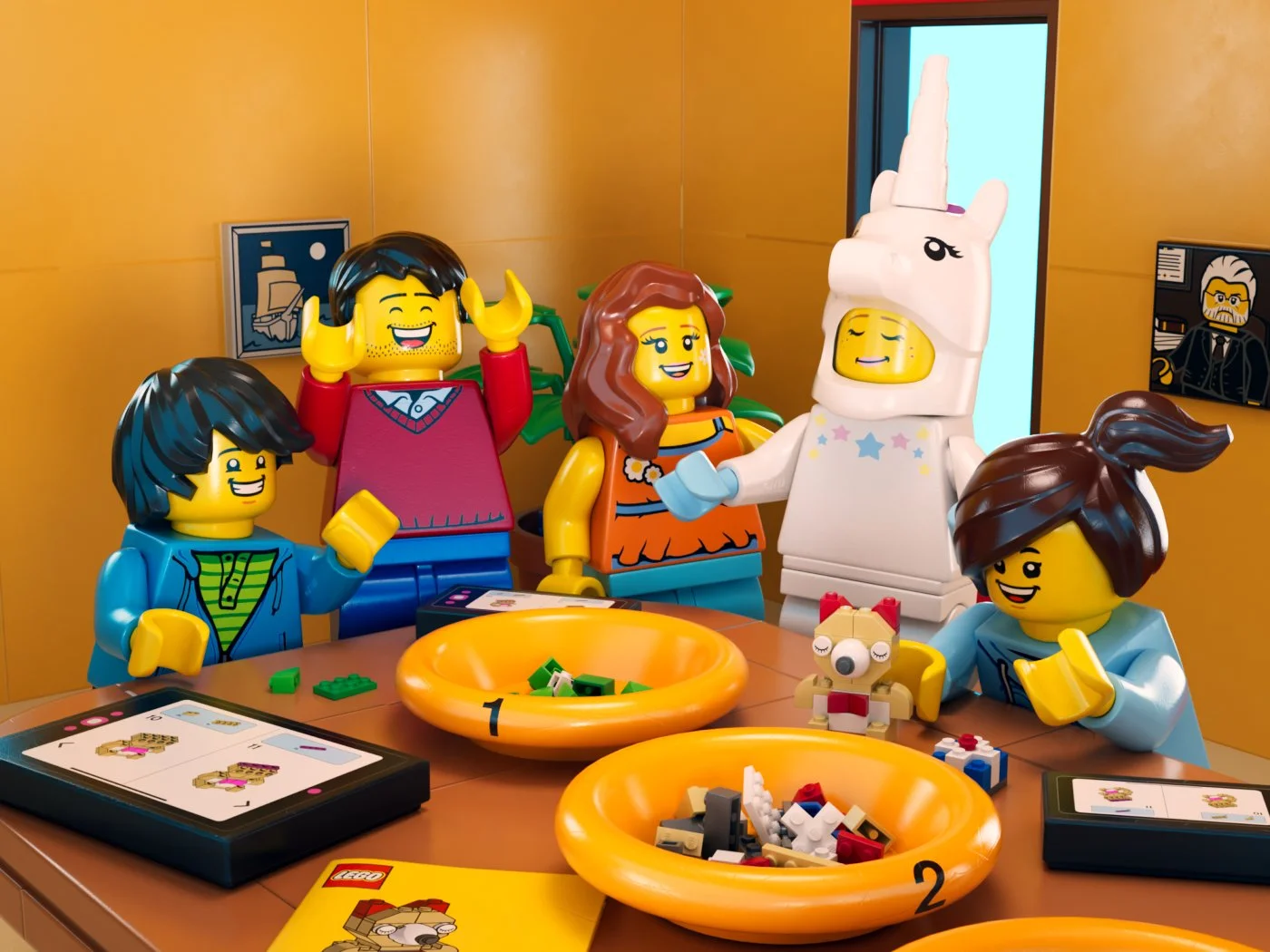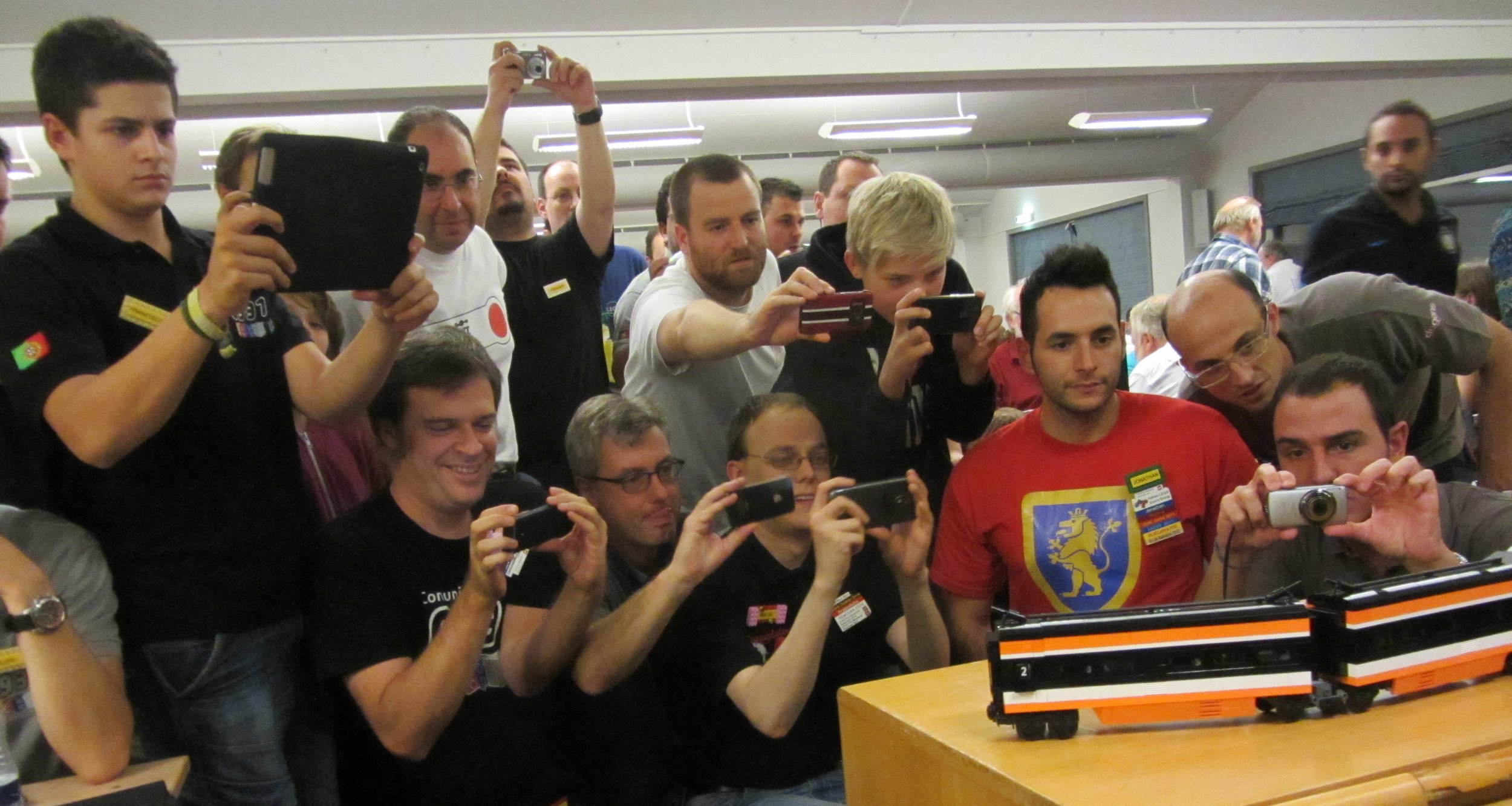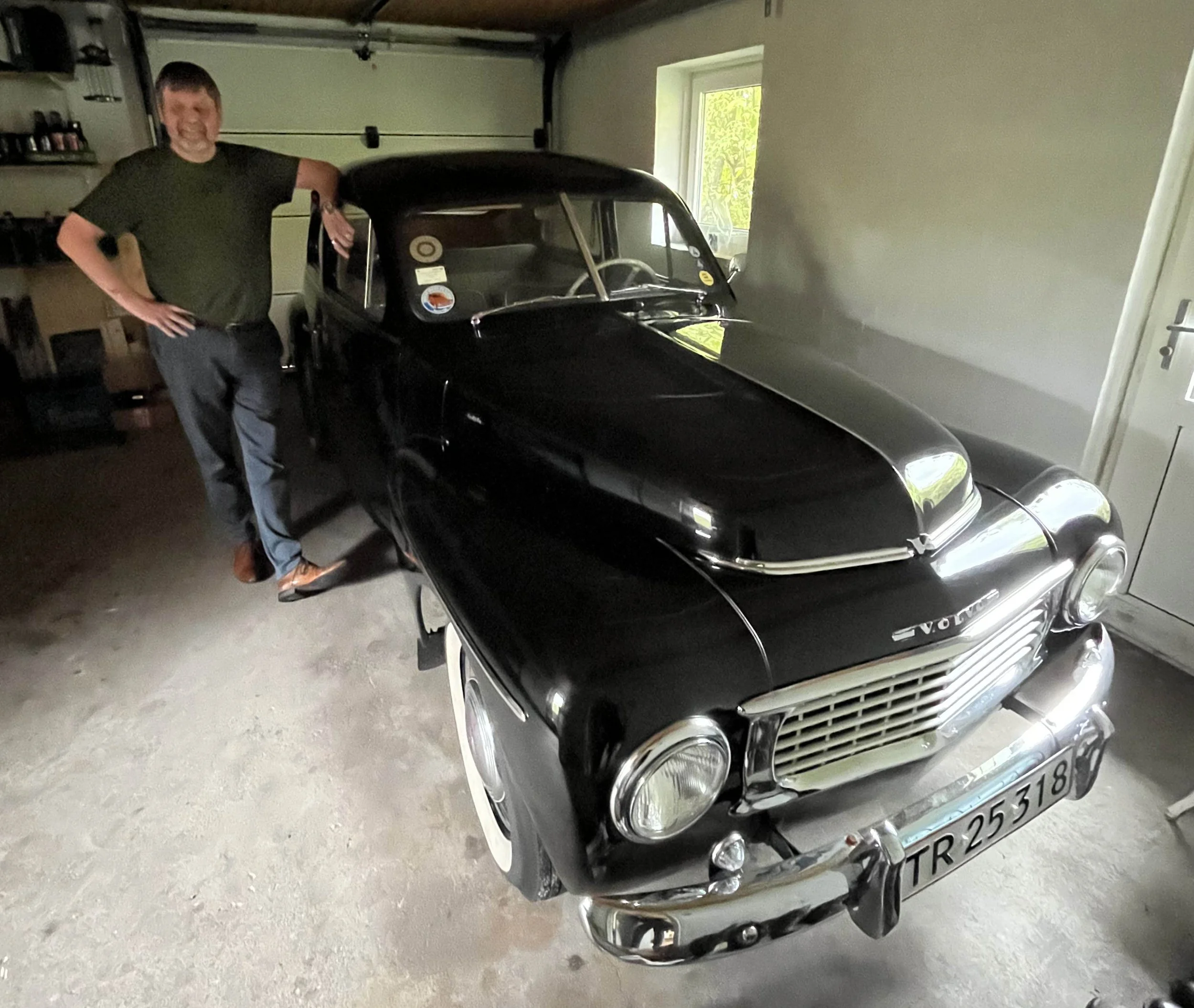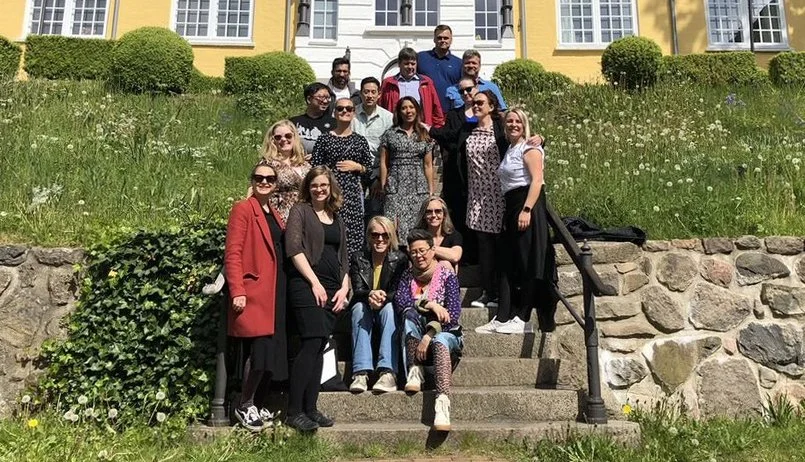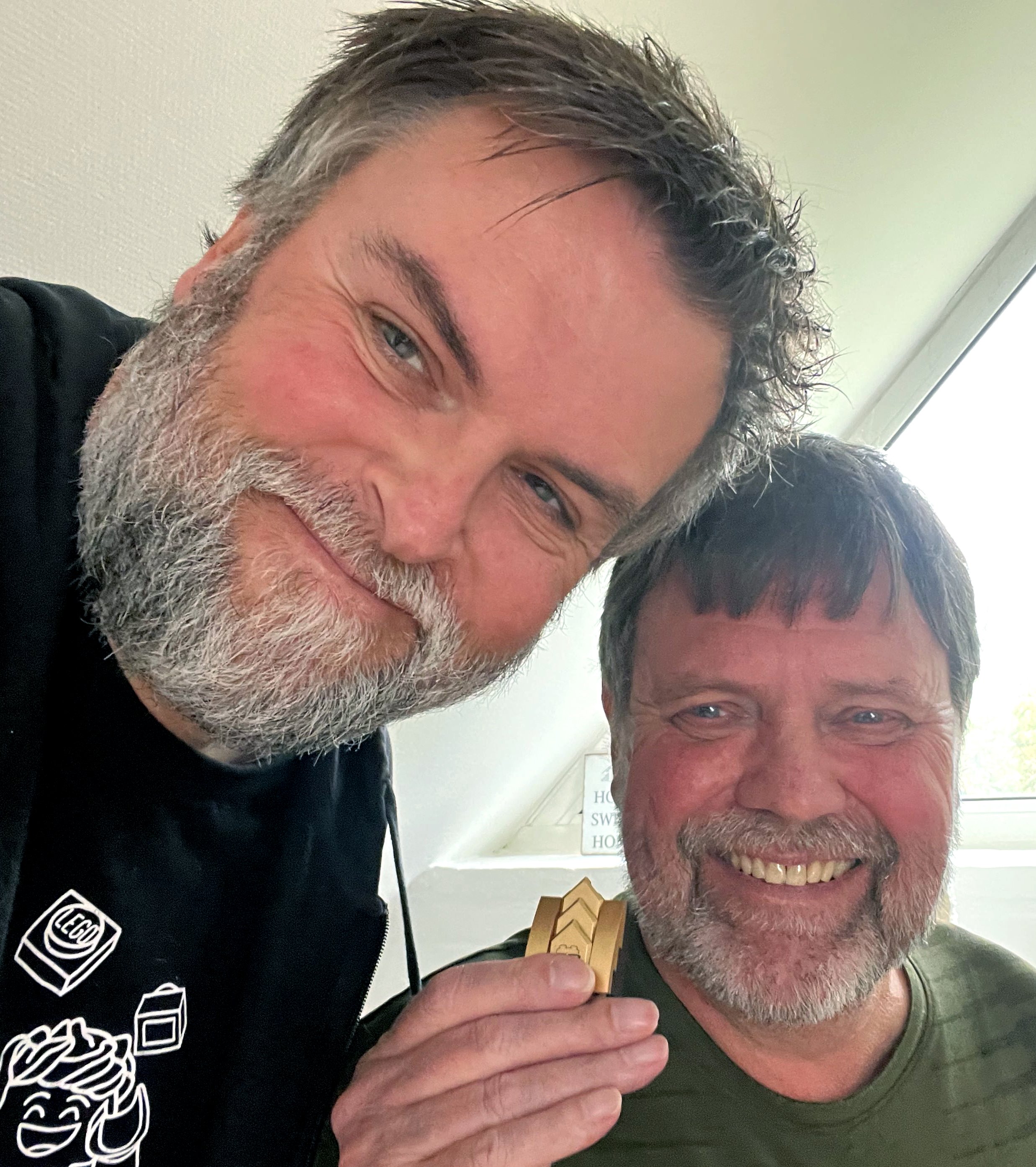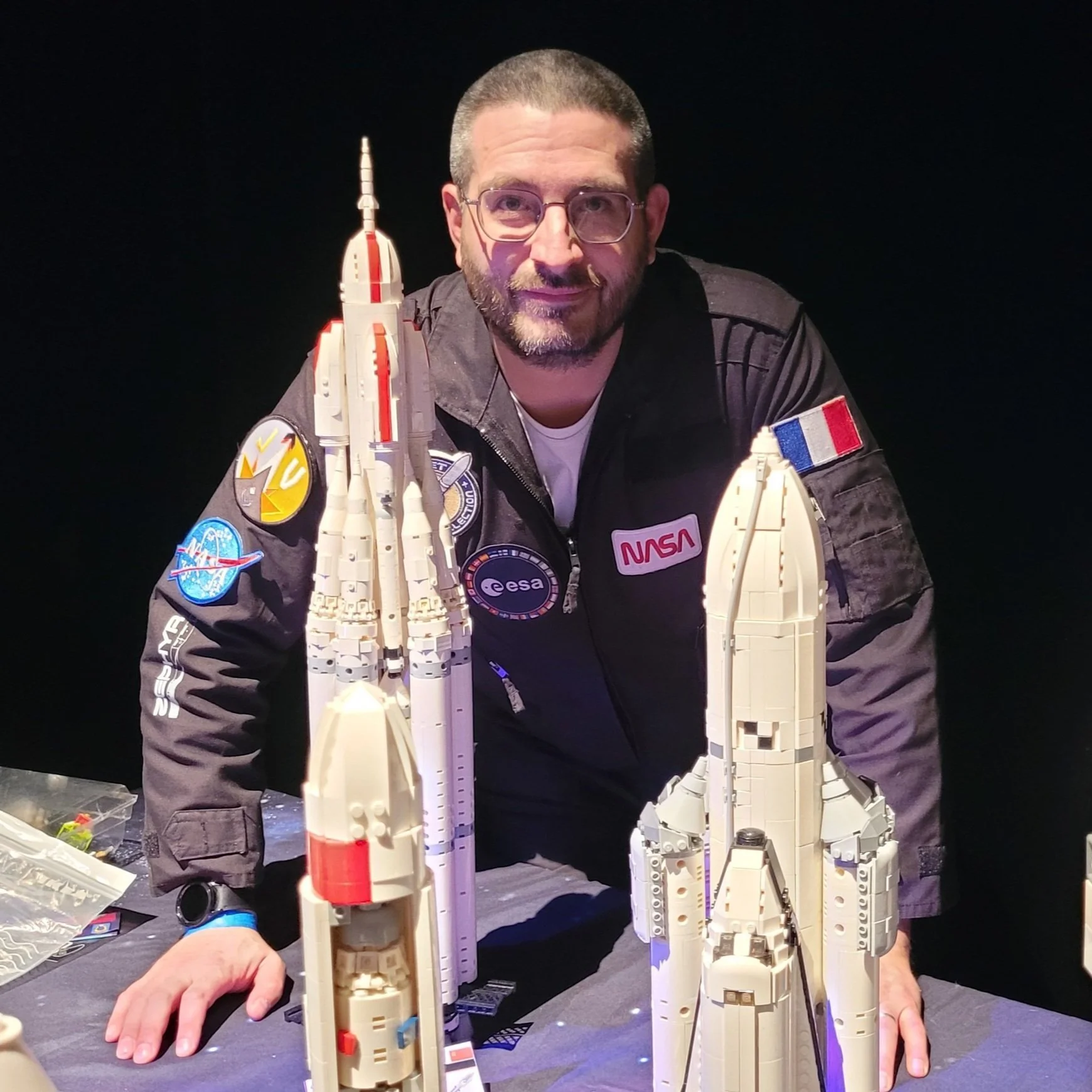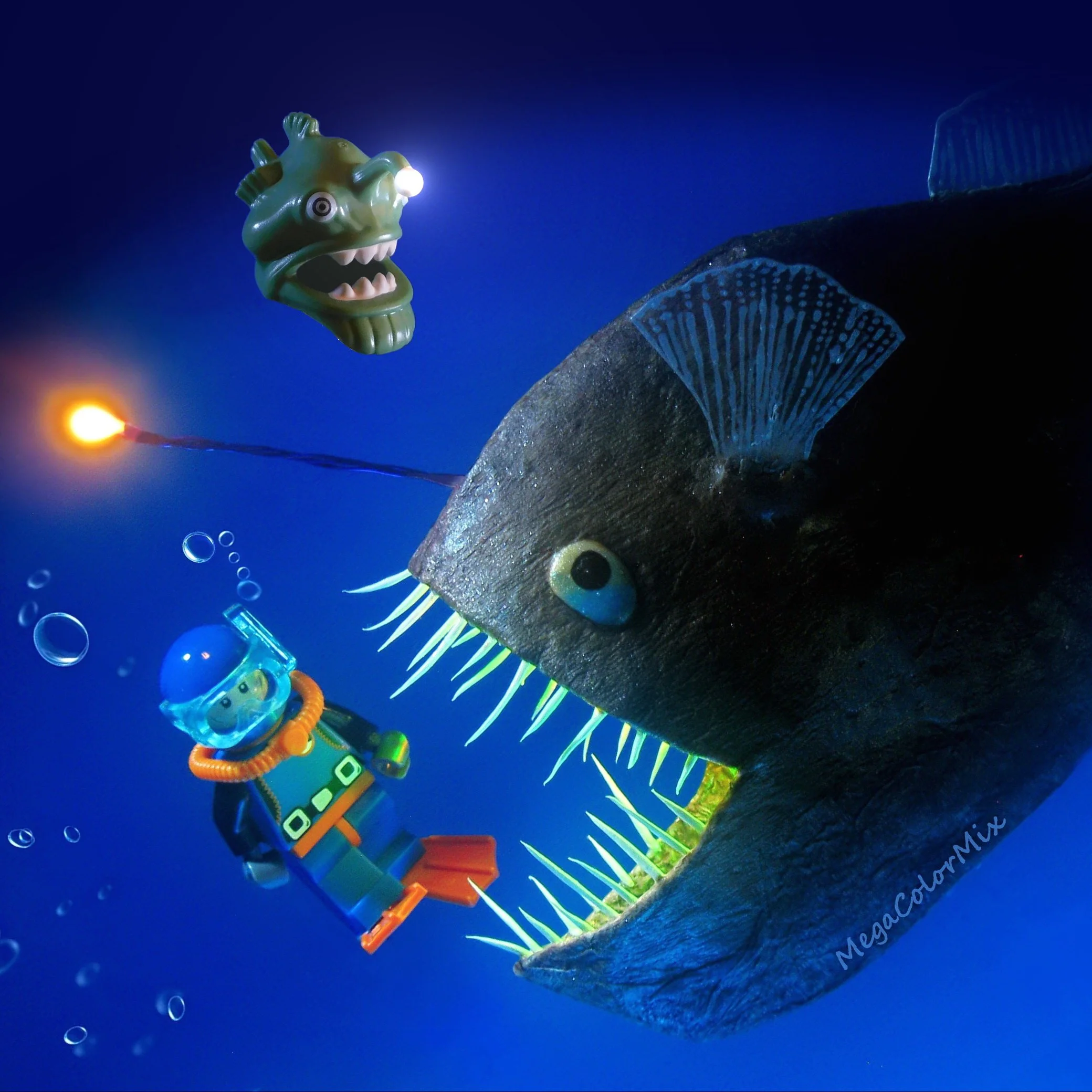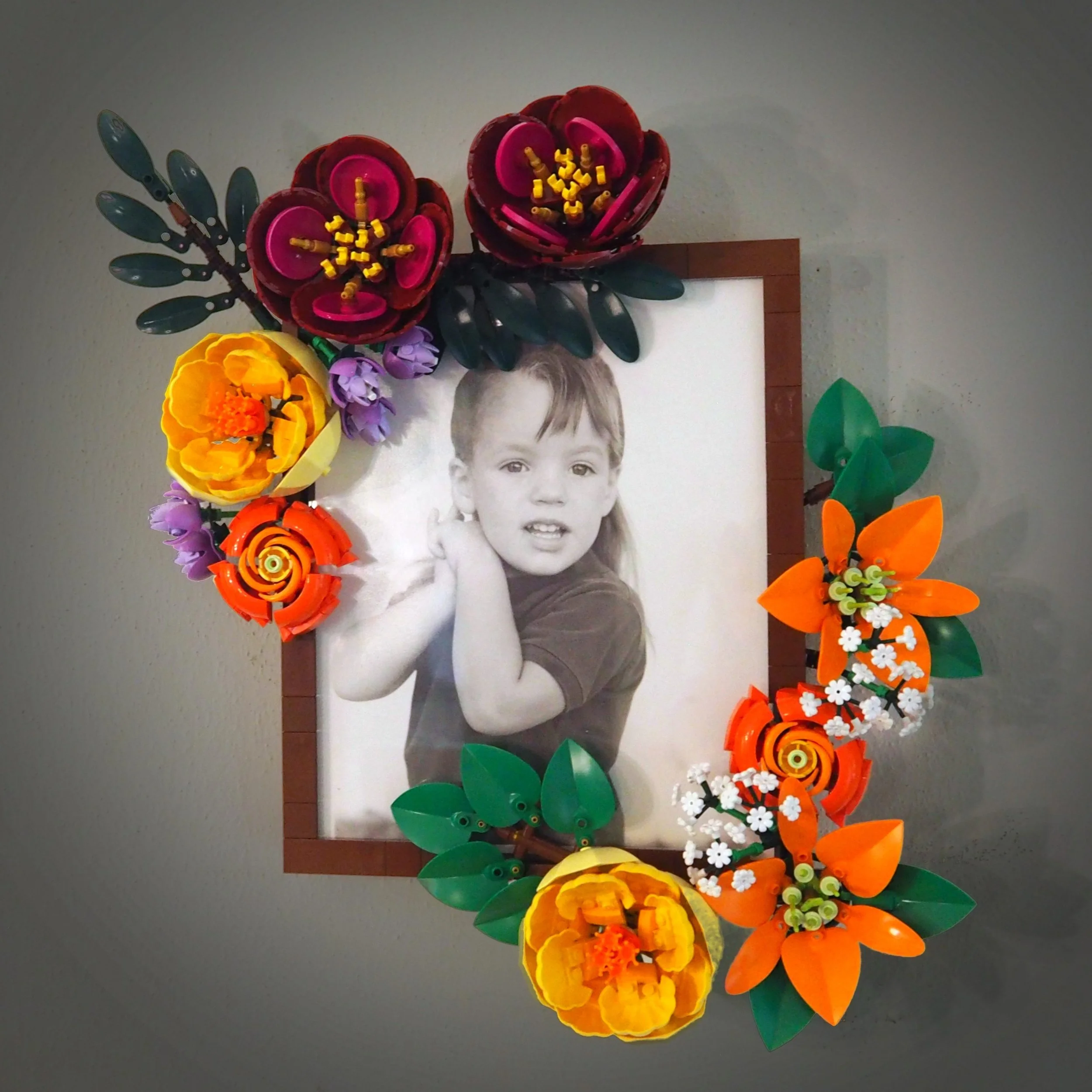Tormod Askildsen: One Last Chat with LEGO's AFOL Advocate, Part 3
/In the third and last part of our interview with Tormod Askildsen, we’ll hear more about the later years of his advocacy of the Adult Fan of LEGO (AFOL) community—and let him explain why he feels that his wish to include AFOLs in LEGO’s target group has finally come true.
Tormod receiving the gift commissioned by the LEGO AFOL Engagement Team for his 60th birthday from Irish builder Jessica Farrell, at the LEGO House pre-opening in 2017: A LEGO model of his house in Billund
Through part one and part two, we’ve followed Tormod’s journey through the LEGO Mindstorms years and into the stage where he started working relentlessly to convince the LEGO Group to accept that AFOLs are worthy of being considered “legitimate” LEGO customers. But even after several concrete attempts to help his colleagues understand the weird and wonderful AFOL community, before and after the big LEGO crisis of 2003-4, it was clear that his work was not done.
Understanding the Galidor Failure
In 2005, Tormod started a project called Core Gravity. This time, the goal was to educate rest of the company about a different kind of LEGO fans: older kids.
“Internally, people were referring to fans as “nerds”. They said they wanted to market LEGO products to “ordinary” people as well, “ordinary” kids and adults. I tried to tell them that these people were pretty normal, and that we should be happy that they were there! To make my point I initiated the Core Gravity research project—if the core is strong, it develops a gravity effect, and it will attract others—to tell my colleagues that instead of focusing on everyone who didn’t like LEGO building, we should focus on those who already liked it. You see, one of the several things that led us into the big crisis was that we developed products to try to attract kids that didn’t like LEGO play, Galidor and stuff like that.”
Gah!! Still just as shocking today. Image via Rebrickable
The theme is universally regarded among fans as one of the biggest failures ever made by the LEGO Group, with some of the most unsettling figures. It also ended up having the complete opposite effect of what its creators intended.
“Normal” LEGO KID? I’ll leave that up to you
“Those kids who didn’t like LEGO play, didn’t like it any more because we made something like Galidor. And all the kids who already liked LEGO play, liked it even less than before, it just wasn’t interesting to them. They liked to make things, build things. What we were able to show with Core Gravity was, firstly, how dependent we were on our core consumers, and secondly, that the kids who liked our products… were pretty normal! They played football, they took music lessons, they had friends, but they were heavy users of LEGO products as well. There was nothing particularly nerdy about them. Which means I managed to make my point.”
LEGO Factory: Turning LEGO Fans into Designers
The Blacksmith Shop by Dan Siskind mentioned earlier may have been the first AFOL-designed LEGO product, but it was by no means the last, and in 2006, the company further explored this niche.
A model of Tormod’s 1956 Volvo PV, complete with box created through the LEGO Factory program
“I moved into LEGO Factory in 2006. That was all about mass customisation, where people could make their own designs online and then have the parts shipped in a nice box. To stimulate sales for this project, we came up with the idea of creating some exclusive fan-designed sets. The Hobby Trains set was one of the first.”
In Tormod’s LEGO room there’s a framed version of the poster that came with that set, and it has been signed by the sizeable group of fans involved in creating it. That’s basically a Who’s Who of LEGO train luminaries.
The signed Hobby Trains poster from Tormod’s LEGO room
“Holger Matthes was one of them, current LEGO designer Pierre Normandin another, and Ben Fleskes who made custom train wheels. And Ben Beneke, Jeramy Spurgeon, James Mathis, Steve Barile to name a few… what a journey that was! Together with my colleague Paal Smith-Meyer, who later started the LEGO Cuusoo project, I sat down with all these fans and had an idea that the set should contain around 1,000 bricks, and the whole group chose which bricks and colours to go for. Then everyone started to build, from the same collection of red, gray, black and white parts. They came up with so many designs! We wanted one super attractive main model on the front of the box, with a printed building instruction. The group used Excel voting sheets to figure out among themselves which model to choose, and ended up with Holger’s lovely crocodile design. But we also included a mind-blowing 29 other designs with digital building instructions.”
The Factory project also brought about four other products: a hot rod car workshop, two space sets known as Star Justice and Space Skulls—and a final one that has gone into fan lore as legendary:
10190 Market Street, originally a Factory set, but now considered part of the LEGO Modular Buildings series
The late Eric Brok, fan designer of Market Street, pictured on the Inside Tour version of the set
“Market Street was actually launched as a LEGO Factory product. Simultaneously, Jamie Berard had worked on Café Corner, so they launched almost at the same time and marked the start of the Modular Buildings line. But there was some tragedy there—we worked with Eric Brok, the fan designer of Market Street, and when we got in touch with him, he told us that he had terminal cancer. He passed away a week before we launched the set. So devastating, he was such a lovely person and it’s such a lovely set. I built one a long time ago, but I have a version here in a redesigned box, which was given out as the LEGO Inside Tour exclusive in 2007. There’s a picture of Eric on the box, to celebrate him.”
Introducing Social Media
It may be hard to believe, but back in 2008, the LEGO Group did not have a presence on any social media. The story of LEGO’s official Facebook page is actually also related to an AFOL.
“I asked why we were so absent at the time, and because the response was like, “yeah, we’re working on it, we need to figure it out…” I made a proposal for how to get started. The first thing we looked into was this Facebook page that people believed was the official LEGO page—understandably, because it had a huge LEGO logo on it, and I think, at the time, around 700,000 followers. So it was huge!”
LEGO versions of social media platforms. Image via Nick Della Mora on Flickr
Huge, but a big risk to the company’s reputation if they have no control over it and it’s being perceived as official.
I don’t know Lars Silberbauer, but I imagine this is how he looks
“Finding out who actually hosted that and managed that page proved very difficult, because there were so few clues on the page itself. But my colleague Lars Silberbauer, who I hired to build the LEGO Group’s social media precsence, did some detective work looking through pictures on the page, and on one of them he found a bookshelf with an old high school plaque… with a name on it! He searched for that person and eventually found him in Chicago. We got in touch and asked very nicely if he would be willing to part with the site, in order for us to take it over and turn it into the official LEGO Facebook page.”
His response? “Yes! Of course!”
“He simply sent us all the documentation and passwords we needed. We wanted to give him some kind of recognition for this, write a little bit about him on the page and tell the story of how it started, but he didn’t want any of it. That’s how the LEGO Group officially arrived on Facebook.”
At the time of writing, that page has 14,349,934 followers.
The official LEGO Facebook page today
Accepting the Adults
Yun Mi Antorini
A close ally for Tormod, whose work has undoubtedly contributed to how AFOLs are now perceived within the company, was Yun Mi Antorini. She first left the LEGO Group in the early 2000s to take a PhD, which she finished in 2007—and when you hear the title of her thesis, you’ll understand why she’s important: “An Intrinsic Case Study of the Adult Fans of LEGO Community.” If that isn’t BrickNerd-worthy, I don’t know!
“In the community, people innovate everything from building techniques to software, to all kinds of things with the LEGO brick at the centre. There were so many interesting findings. I felt that we needed to get more organised and strategic in the way we worked towards adult fans and consumers, so I managed to get Yun Mi back into the company, and in 2012 we developed, for the first time since our white paper in 2002, a proper community engagement strategy. That was super important for our direction and priorities during those years.”
Yun Mi Antorini and Tormod with Kouhei Nishiyama, founder of the CUUSOO system, at the LEGO Group’s offices in Billund in 2017. Image via University of Tokyo
“It was revised in 2018-19, also overseen by her, but before that, we sat down in 2017 to develop a one-pager, a slide, called Blind Spot—we chose that name to point out, again, that there was something that seemed to be a recurring blind spot for the LEGO Group: Adult consumers. Adult fans. We pointed out opportunities and threats, and that actually led to a lot of different things.”
In 2020, the now-familiar “18+” labelling on the boxes appeared for the first time, and it has signalled a brand-new strategy for the company, with niche LEGO products clearly aimed at adults. The reason for this? Blind Spot.
“I do believe that this was what eventually, finally, sparked the new adult strategy. We suggested that the company accept that the people in our 0-14 target group are not the only ones buying and enjoying our products. So why not extend our target group to include older consumers? I think the biggest argument towards the broader 18+ audience is that it allows you to take a break from the daily rumble. Just lock yourself up somewhere and unwind. I think many adults have found that message to be quite compelling.”
Clearly an adult LEGO customer who has achieved zen through building. FROM the Batman art set Official PR package
This expansion of the target group to include adults is clearly, to Tormod, one of the biggest achievements of his career.
“I was not directly involved when that decision was made. But I certainly think that what we’ve been doing, and what AFOLs have been doing, inspired that to happen. It was a personal high for me when the target group was extended to include adults, and the 18+ portfolio was introduced.”
“You see, maybe the toughest part of my career has been to work with a group of incredible fans for fifteen years, 2000 to 2015, that were not part of our target group. Our previous Community Coordinator for North America, Kevin Hinkle, told me once that he had talked to an AFOL that said to him, “I hope that one day the LEGO Group will consider me a legitimate consumer.” The frustration of working with these awesome people who bought so many sets and were a big part of our business, knowing how much they loved the product, how talented they were, how much joy the building experience and the community gave them… and still, as far as the company was concerned, they didn’t really exist. That was a tough one to handle.”
The LEGO model of Tormod’s house that he received for his 60th birthday in 2017, built by Jessica farrell. Some pretty distinguished guests are visiting, and the Norwegian flag has been raised to celebrate his roots. The LEGO room where we did the interview is located on the top floor, behind those two big glass windows, and there’s Tormod’s Volvo PV again
BrickLink: From Fan Concept to Official LEGO Business
BrickLink founder Dan Jezek, working on the classic BrickLink landing page. Image via danjezek.com
The 18+ strategy was, however, a relatively late outcome of the Blind Spot slide. A couple of other consequences were more immediate, and one of them was related to one of those aforementioned fan innovations: BrickLink.
The BrickBay welcome page. Image via danjezek.com
“We had known the site for many years, of course, and that story is fascinating in itself. Dan Jezek was a young guy who was super interested in technology and computers and taught himself all kinds of programming. He was a true lead user: He had a personal need—to sell some of his LEGO bricks because he wanted to buy some new sets—and so he created a solution to fulfill that need. He set up a website, offered his bricks for sale, and people bought them. Then other people came to him and wanted to sell their bricks as well. He called the site BrickBay, because he lived next to a beautiful bay in Hawaii with his family, and the name was a family decision… and then that caught the attention of a slightly bigger company with a very similar name, which prompted a quick name change!”
Dan Jezek sadly passed away in 2010, and his mother Eliska and stepfather Harry ran BrickLink for around three years but eventually sold it to a South Korean businessman, Jay Kim.
“After Jay took over, a whole lot of things started to change. He owned that big gaming company, Nexon, so he had a lot of people that he could put on different projects. They developed this piece of building software they called Stud.io, plus a new creator community app they called Brickly. We were afraid that all this new activity would create a separation for us in the way we worked with AFOLs, so we sat down to talk with them. And one of the things that came out of that, an attempt to get closer and do something meaningful for both companies, was the AFOL Designer Program.”
Tormod with “The LEGO Story,” one of the sets that came out of the initial round of the BrickLink AFOL Designer Program. This particular box is reserved for Dan Jezek’s mother Eliska, who asked Tormod to get one for her
In its original form, the program ran for a year—and then, in November 2019, the LEGO Group’s acquisition of BrickLink was announced.
“That was not my decision, but there were just so many synergies, so many things they did well, that we eventually wanted to do well, that it was an obvious thing to do. Now we are going through the integration, and there will always be challenges with something like that, but they’re good people, and it’s a great company.”
Lead User Lab: Exploring the Unknown Potential of AFOLs
Suddenly, we have arrived at the last point on Tormod’s long list, his so-called “mixed bag of 34 memories from 39 years,” and that’s the final thing—at least so far—to come out of Blind Spot.
“When we were talking with the “hackers” way back in ’99, we discovered for the first time that among LEGO fans, there are some highly capable people with a high level of expertise in many fields—not directly related to building and designing, but what you’d call the adjacent part, close to the LEGO core business, but things we’d never been doing ourselves. We now have LEGO Ideas that is tapping into the design part, but Yun-Mi and I felt that there had to be something we could do to make use of all these other capabilities in some way.”
LEGO Night Mode, a Lead user Lab concept that created quite a stir at LEGO World in Copenhagen in 2020, but eventually didn’t make it to shelves. Tormod admits this public test wasn’t necessarily managed in the best way possible
That’s how the Lead User Lab became a reality.
“We decided it would be a two-year pilot, just to see if our hypothesis was right, and our Lead User Lab team, headed up by Kari Vinther Nielsen, looked through several hundred projects and discussed the most intriguing ones with the lead users who had come up with them, until they ended up with a few really promising concepts. And eventually, one astonishing thing came out of it, and that is what we now call Build Together.”
How the Build Together app is presented on lego.com
The creator of this project was working with manufacturing lines in the automotive industry in Germany, which makes a lot of sense when you know what it’s about: essentially a piece of software which allows several people to build one LEGO set together, physically.
“The guy with this brilliant idea was not what you’d typically call an AFOL, but he was certainly a kind of LEGO fan and had a lot of sets at home that he had built—not just alone, but also with friends. We had good talks with him and eventually gave him an offer he was happy with. Then we gave his software to our digital instructions team. It took them half a year to develop a beta based on his prototype, and get it out there.”
“To me, that proved the case. For the past 20 years, inside the company, we have discussed and investigated ways to make the LEGO building experience more social. And what this guy did… just like that, there’s a solution for it. You take that set, and suddenly eight people can build it together. I’m very pleased with that. We learned a lot with Lead User Lab, and eventually we even implemented one of the innovative ideas that came out of it.”
Drawing Conclusions and Moving On
And just like that, we’re at the end of the list. But when we have the opportunity to sit down with a man who spent fifteen years looking at the community we call our own, we have to ask: has it changed much?
Presentation of the Horizon Express set at my first LEGO event, the 2012 LEGO Fan Weekend in Skærbæk
“It has certainly become a lot bigger, and spread to every part of the planet. We haven’t even talked about the amazing growth of the AFOL community in Asia, and we have ambassadors from around 60 countries in the LEGO Ambassador Network. It has also matured tremendously. But back in 2005-06, we asked our early ambassadors to create a video that we could use internally, where they talked about the LEGO hobby and what it meant to them, and also what kind of support they felt they were lacking from The LEGO Group. It’s funny you should ask that question now because I watched that video again the other day… and many of those topics are still relevant today. So in many ways, the community is still indeed the same.”
It is clear that Tormod’s career has brought him a lot of joy. Sure, there have been ups and downs, but the sheer number of stories he’s told us speak volumes about 39 years that have been mainly good. So why stop now?
Sitting in Tormod’s garage is his black 1956 Volvo PV, which he’s owned for 40 years. Maybe this beauty will see a bit more use in the coming years
“There are a few reasons. One of them is the growing number of times when I get a sense of déjà vu. I keep thinking, “But we’ve done that before”, and then I’m told that we need to prove it again. Then it’s probably time to move on, because you’ll just continue experiencing that, and that’s not good. There’s also the small matter of my own energy level—at 65, it’s not the same as it was ten years ago. The LEGO Group is a very energetic company, things are moving fast, and I’ve needed to mobilise more and more energy just to do my day job which has meant that I haven’t had much left for other things. And finally, I came into the LEGO Group directly out of business school. I’ve never been to another company, never done anything else, so I feel a need for some freedom to try to explore what can be found outside the walls.”
And the plans for how that freedom should be utilised are already taking shape.
Now What?
Gathering insights and knowledge, in this case delivering the keynote speech at BrickFest in Portland, Oregon in 2004. Image via Joe Meno on Brickshelf
“I’d like to maybe put together my insights and my knowledge in a way that could be useful to other companies—in other industries, not competitors, of course—who are either looking for how to build communities with their consumers, with the purpose of building relationships and getting closer to their consumers, or working with open innovation, like we’ve done in The LEGO Group. So maybe some consulting.”
“Also, I just became a grandfather, and I want to be able to spend time with little Nora, so the timing is perfect. My daughter and son-in-law live in Copenhagen, so working a full-time job made that difficult, but now I can just pop by and spend a couple of days with them. Plus, I’m actually looking into esports! My son is very much involved with that, and I find it absolutely fascinating. So maybe I can find a use for my experience in that field.”
Clearly, Tormod Askildsen’s life will not be all quiet after he’s walked through The LEGO Group’s doors for the last time in his professional life. But somebody’s going to have to fill his shoes, and they have their work cut out for them.
The AFOL Engagement Team in 2019. People are rapidly moving in and out of roles at the LEGO Group, but somebody in this group may be filling tormod’s shoes now that he’s stepping down. Image via Sara Skahill on the LEGO Ambassador Network
“They will need to be aware of the difference between the casual adult consumer, somebody who buys the Ferrari Daytona this year, and then another set next year, and the AFOL who has been around in the hobby for years, who is a part of a global community, and understands the brick, the building system, maybe the LEGO idea better than most of us in the company do. Those are two distinct groups of adult consumers, and now that we’re actively targeting both with the 18+ portfolio, it will be essential to have that understanding, so that AFOLs feel that they get the attention that they feel they deserve. They are getting in touch with us to let us know there’s a difference, and rest assured, we know. I guess what they’re basically trying to tell us is that it’s nice that we launched the 18+ portfolio, but we didn’t take care of everything by doing that.”
It’s almost like he knows us!
Then again, he has spent fifteen years trying.
Did you realise how much Tormod has meant to the AFOL community? Did you learn something new about LEGO Factory or BrickLink? Or maybe you just share Tormod’s passion for the Volvo PV? Let us know in the comments!
Do you want to help BrickNerd continue publishing articles like this one? Become a top patron like Charlie Stephens, Marc & Liz Puleo, Paige Mueller, Rob Klingberg from Brickstuff, John & Joshua Hanlon from Beyond the Brick, Megan Lum, Andy Price, and John A. to show your support, get early access, exclusive swag and more.

